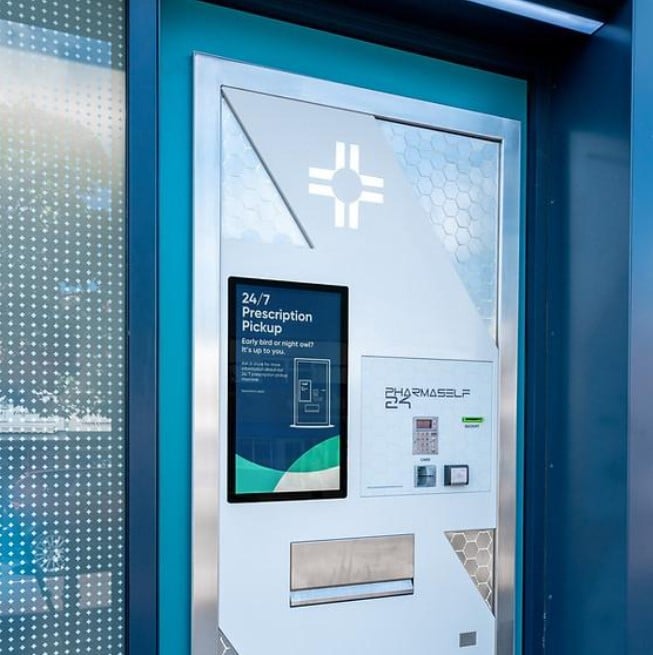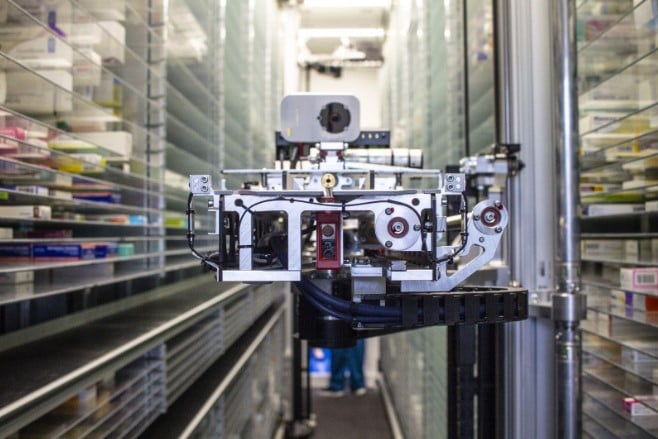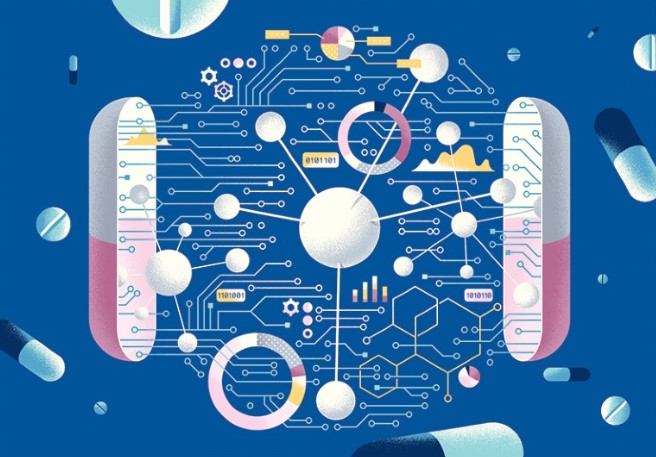Artificial intelligence is without a doubt a big deal when included in our arsenal in many branches and fields of life sciences, such as neurology, psychology, and diagnostics and screening. In this article, we will see how AI can also be beneficial in the field of pharmaceutics for both pharmacists and consumers. If you want to find out more, keep reading!
Introduction
When you want to pick up your meds you go to your nearest drug store. However, this applies only to over-the-counter medications. But what happens when you have to pay a visit to the doctor and he needs to prescribe something? Surely enough, there have been times when you have struggled with that. If you want to understand why such cases occur and how the pharmaceutical industry can benefit from AI, you definitely need to keep reading!
I Just Want an Appointment!
So you pick up the phone, you call the nearest clinic or hospital, and they put you on hold. You hear this annoying music playing – you know which – for up to 30 minutes. Someone picks up, and you tell them that you need to book an appointment, yet they put you again on hold. Long story short, you managed to make an appointment, but it is set for 2 weeks from now. And you go there, you have the examination and you are required to have some laboratory tests that, unfortunately, need to be booked separately. You wait for your test results to be issued and then you need to visit your doctor once more so that they can give you a prescription, which you need to show to pick up your medications from a pharmacy that has them in stock. If this seems like it is taking forever, consider all the paperwork you need to sign… For some of you, this might seem like a dystopian scenario. You are wondering: ‘Is this even possible in 2024’? Gosh, you would be surprised at how people in many contemporary countries still struggle with such bureaucracy, queues, phone calls, and delays. Fortunately, the solution is right around the corner. We have talked about how AI can automate procedures inside the hospital using the Internet of Medical Things (IoMT), which is more or less a more specific application of the well-known Edge Computing Internet of Things (IoT). As in many different fields, the IoT does not need to be contained within the hospital.
The healthcare industry is worth billions, and for good reason. But why not improve it by automating everything that can be automated? Instead of calling for an appointment, you could use an app to see available slots to choose from. You go there, you have the visit, and the doctor can log in to the system to prescribe some tests for you, either at the hospital itself or an external laboratory of your preference, picking the day and time that suit you. You, now, using the generated code that is unique to you, can visit the lab and have your exams without waiting in line. And because lab personnel are no rookies, they have a Laboratory Information System (LIS) that is connected to the cloud server and receives the prescribed tests automatically. Of course, no one is going to ask you to sign anything or pick up the results yourself. Instead, they will be sent to your and your doctor’s inbox. Then he will ask you to make another visit (which you already know how to do), or he will electronically prescribe meds. You only need to go to the drugstore and pick them up. Isn’t that simpler?

Now, maybe you are a very busy person. Maybe your job requires you to be on the go at all times. Surely enough, you don’t want to spend any time at the pharmacist’s counter. Who says that there are no solutions for you? Many logistics companies have introduced contactless pickup points in major cities, where you can make a self-pickup at any time. The same has been introduced to medicine. Pharmacies have recently introduced the same, offering pickup points on a 24/7 basis. Select the one you want and pass by whenever. Use the provided code to unlock the locker and collect your medications on your way to the office or back home. We know that you enjoy a glass of wine after work. Remember though, alcohol and medication don’t go together!
You Need Some Pills Huh?
Of course, there is a dark side to medication. There have been many cases in which pharmacists and doctors have been involved with falsely prescribed medications. Now, we don’t wish to accuse anyone. Mistakes occur, and people can become very creative when it comes to schemes. That’s why it is necessary to keep a record of everything. As patients have their own history within a hospital, which is accessed only by physicians, pharmacists have a similar history with respect to the medications people have purchased, accessed by their social security number. People can get sick for different reasons and may have conditions that occur suddenly and require specific medication. You will say ‘Where is the harm in that’? It has been noticed that people ask for non-prescribed mental health medications very often. Mental health statistics provided by the NHS for 2022-2023 state that there was a 2% increase in antidepressants compared to last year, while CNS stimulants and drugs for ADHD increased by 32% in adults over 18 and 12% in children aged 17 and under (NHS releases mental health medicines statistics for 2022/2023 in England, 2023). Such medication, if taken uncontrollably or without proper supervision, can cause many problems. A proper AI model could not only recognise patterns in what drugs someone has bought, but it could run through prescriptions and points of purchase to find correlations and ensure that such cases don’t occur.

Order Up!
Now, this might seem too techy for some of you out there. We don’t judge. After all, some things are just a matter of preference. However, jokes aside, there are people who struggle with technology, like the elderly, who mostly prefer human interaction, as it makes them feel safer. Most of them take many pills and over the years have developed a true relationship with their pharmacist. Although grandpas and grandmas can be adorable, they can sometimes be grumpy or clueless about what they need to ask for. This can potentially complicate things for the pharmacist, as they have to extract information. As if this weren’t enough, the stock some drug stores can have is absolutely massive. Just the categories will make you feel dizzy: Liquid, tablets, capsules, inhalers, suppositories, injections, and the list goes on! Pharmacists must be well aware of their inventory if they do not want to run out, or if they don’t want to check it every day.
There are different software for that; however, not all of them are as intuitive. Keeping track is one thing, but making projections will take things to a whole new level. AI algorithms can be implemented in such software to make estimations of the traffic a drug store will have on a daily, weekly or monthly basis and to inform the pharmacist in advance about a potential shortage. Of course, automation is our friend, and it is there to save us time and effort. The software could even be connected to the depot over the cloud and place an automatic order according to the projections made!
Shelf 15, Row 10, Column 34
What’s more, we aren’t sure if you are aware, but the pharmaceutical industry as a whole occupies a lot of space. We are talking about entire building blocks, mainly because they want to have a large stack to serve as many pharmacies as possible. As you know, warehouses need a lot of personnel to function well, as errors can easily happen. Leading logistics companies have been using robots for a while to automate processes and maximise efficiency. The same principle has been implemented by pharmaceutical depots to sort meds faster, complete orders in a few minutes, and even restock the shelves. In a nutshell, vastly improve the performance of their supply chain. Such robots utilise GPU-accelerated Computer Vision (CV) combined with predetermined paths stored in their memory to find the shelf, row and column numbers, making them capable of knowing at all times where even a single pill can be found!

Look What I Made!
Of course, it’s not all sunshine and roses. Scientists at pharmaceutical companies put a lot of effort on a daily basis to design new medications, spending many hours over a microscope or in front of the screen, draining their brains while performing difficult calculations. Sometimes trial-and-error is not even an option, as budgets are not always unlimited, while other times drug discoveries are a race against time.
Drug discovery is an interdisciplinary application that includes biology, chemistry, medicine, and genetics, among others. There are OTC drugs, and there are also application-specific pharmaceutical products. Focussing on the latter, there are hundreds of different conditions that cannot be treated with OTC medicine. What we are talking about is not just prescription medicine, but custom medicine for each and every one of these cases. You understand the amount of effort, time, precision and quality control that such a task demands. As if that weren’t enough, every new drug must be tested in living subjects after it is created, with the last stage being clinical trials. Such trials need to be monitored first in controlled environments, and then the monitoring can be done in the environment of each subject while they follow their daily routine. Let’s talk numbers. From 2000 to 2008, 209 different medicines were approved by the FDA only. Of these, 9.09% were indicated for cardiovascular disorders and 12.91% for neurological disorders, while antibiotics and antivirals were 5.26% and 5.74%, respectively, and anticancer drugs were 11.96% and biologics 7.17%. The years 2009 to 2017 surpassed the previous ones, as 302 drugs were approved (Batta, Kalra and Khirasaria, 2020).

To achieve their goals, scientists have huge databases at their disposal, from which they can extract data to refine their designs and ensure the best possible outcome. If you dive deeply into what a medication looks like, it is more or less different molecules that work together, packed in a pill or a vaccine. Augmented Reality (AR) and Virtual Reality (VR), are branches of Extended Reality (XR) that can open new worlds in the field of pharmaceutics. Instead of using microscopes and damaging their eyes, why not enlarge these molecules in a way that is interactive? Molecules have 3 dimensions, and viewing them from different angles, and extending real imaginary or virtualising meds can be a game changer. We can have an entire team working on the same molecule simultaneously, sharing ideas, redesigning, changing the structure, and even running laboratory simulations on the drug delivery efficiency, bioavailability, and side effects.
Summing Up
There is no doubt that implementing AI in pharmaceutics is priceless, not only for consumers but for the entire industry, including pharmacists and people behind the curtains. We can have algorithms that can simplify the process from visiting a doctor to receiving our medication, including all the in-between stages. Smart vending machines for OTC meds have become a reality, intuitive inventory monitoring software can solve our hands, and cutting-edge drug design is at our disposal.
What We Offer
At TechnoLynx, we are proud of our innovative spirit. Our specialisation and expertise lie in delivering tech solutions custom-tailored to your needs. We understand better than anyone the benefits of integrating AI into pharmaceutical manufacturers’ applications. We are committed to providing cutting-edge solutions while ensuring safety in human-machine interactions, managing and analysing large data sets, and addressing ethical considerations at the same time.
Our software solutions are precise, empowering a plethora of fields and industries using AI-driven algorithms. We are committed to innovating and adapting to the ever-evolving AI landscape. The solutions we present are designed to increase accuracy, efficiency, and productivity. Make sure to contact us to share your ideas or questions. We will be more than happy to make your project fly!
List of references
-
£1.5M DIGITAL PHARMACY POWERED BY ROBOTS AND AI TO CREATE 30 JOBS (2018) ResponseSource Press Release Wire (Accessed: 3 April 2024).
-
24hr prescription collection, Medicine vending. Pharmaself24 (no date) Pharmaself24.co.uk.
-
Batta, A., Kalra, B.S. and Khirasaria, R. (2020) ‘Trends in FDA drug approvals over last 2 decades: An observational study’, Journal of Family Medicine and Primary Care, 9(1), pp. 105–114.
-
Fleming, N. (2018) ‘How artificial intelligence is changing drug discovery’, Nature, 557(7707), pp. S55–S57.
-
Man Medicating Himself At Home Medicine Stock Photo. Download Image Now - Pill, Men, Capsule - Medicine - iStock (no date) (Accessed: 3 April 2024).
-
NHS releases mental health medicines statistics for 2022/2023 in England (2023) NHS Business Services News (Accessed: 3 April 2024).












